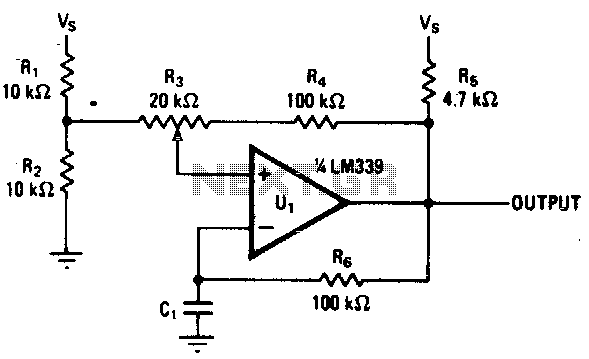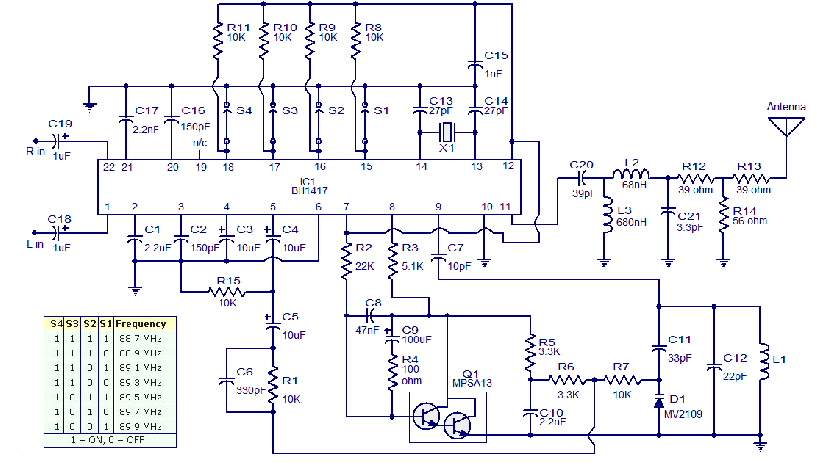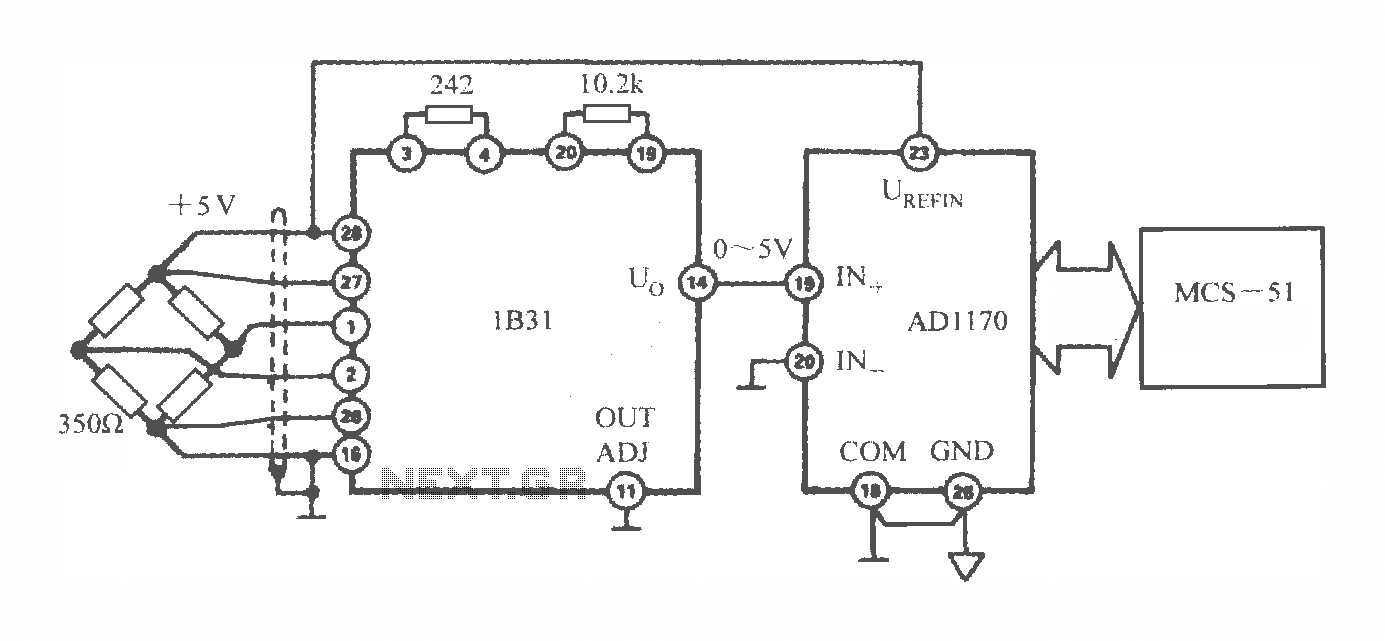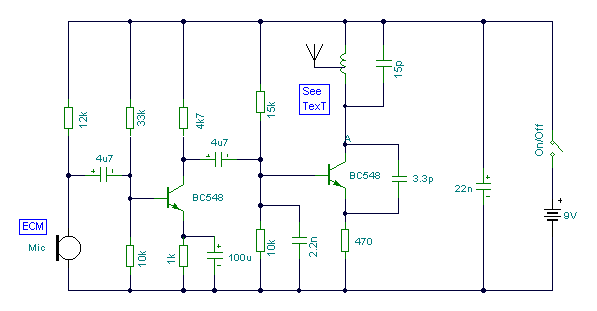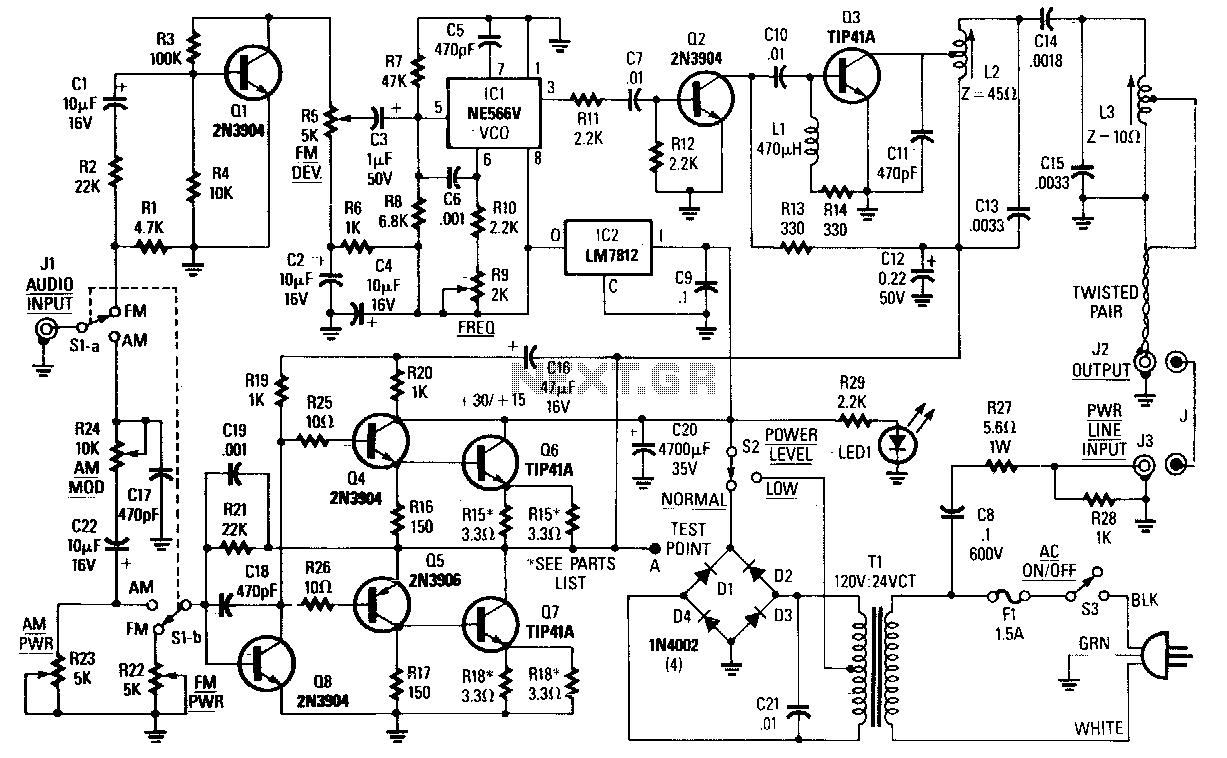
Oscillator configuration in transmitter
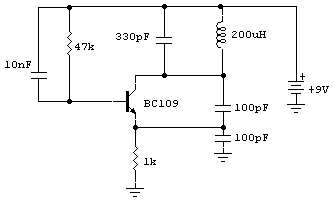
An inquiry was received regarding an oscillator used in an AM transmitter. Research was conducted online, leading to the discovery of a relevant circuit. According to the author...
The oscillator circuit for an AM transmitter typically serves as the primary signal generator, producing a carrier wave that is modulated with audio information. This circuit often employs a combination of active and passive components, including transistors, capacitors, resistors, and inductors, to create oscillation at the desired frequency.
In a basic design, the oscillator may utilize a transistor in a common-emitter configuration. The input signal is fed into the base of the transistor, where it is amplified. Feedback is provided through a network of resistors and capacitors, which determines the oscillation frequency. The output is then coupled to an LC (inductor-capacitor) tank circuit that helps to filter and stabilize the oscillation, ensuring a clean carrier wave.
For AM transmission, the modulated signal is generated by varying the amplitude of the carrier wave in accordance with the audio input. This modulation can be achieved using a simple variable resistor in series with the audio signal, allowing the amplitude of the carrier wave to change as the audio signal varies.
Careful consideration must be given to component values to ensure the oscillator operates within the desired frequency range and maintains stability under varying conditions. Additionally, the design may include tuning elements to allow for frequency adjustments, which is essential for compliance with broadcasting regulations and for optimizing transmission quality.
Overall, the oscillator circuit is a fundamental component of AM transmitters, playing a crucial role in the generation and modulation of radio frequency signals.Hi Expert, I recently receive some question on an oscillator in some AM transmitter. I searched the web and find this circuit. According to author,.. 🔗 External reference
The oscillator circuit for an AM transmitter typically serves as the primary signal generator, producing a carrier wave that is modulated with audio information. This circuit often employs a combination of active and passive components, including transistors, capacitors, resistors, and inductors, to create oscillation at the desired frequency.
In a basic design, the oscillator may utilize a transistor in a common-emitter configuration. The input signal is fed into the base of the transistor, where it is amplified. Feedback is provided through a network of resistors and capacitors, which determines the oscillation frequency. The output is then coupled to an LC (inductor-capacitor) tank circuit that helps to filter and stabilize the oscillation, ensuring a clean carrier wave.
For AM transmission, the modulated signal is generated by varying the amplitude of the carrier wave in accordance with the audio input. This modulation can be achieved using a simple variable resistor in series with the audio signal, allowing the amplitude of the carrier wave to change as the audio signal varies.
Careful consideration must be given to component values to ensure the oscillator operates within the desired frequency range and maintains stability under varying conditions. Additionally, the design may include tuning elements to allow for frequency adjustments, which is essential for compliance with broadcasting regulations and for optimizing transmission quality.
Overall, the oscillator circuit is a fundamental component of AM transmitters, playing a crucial role in the generation and modulation of radio frequency signals.Hi Expert, I recently receive some question on an oscillator in some AM transmitter. I searched the web and find this circuit. According to author,.. 🔗 External reference
Warning: include(partials/cookie-banner.php): Failed to open stream: Permission denied in /var/www/html/nextgr/view-circuit.php on line 713
Warning: include(): Failed opening 'partials/cookie-banner.php' for inclusion (include_path='.:/usr/share/php') in /var/www/html/nextgr/view-circuit.php on line 713

